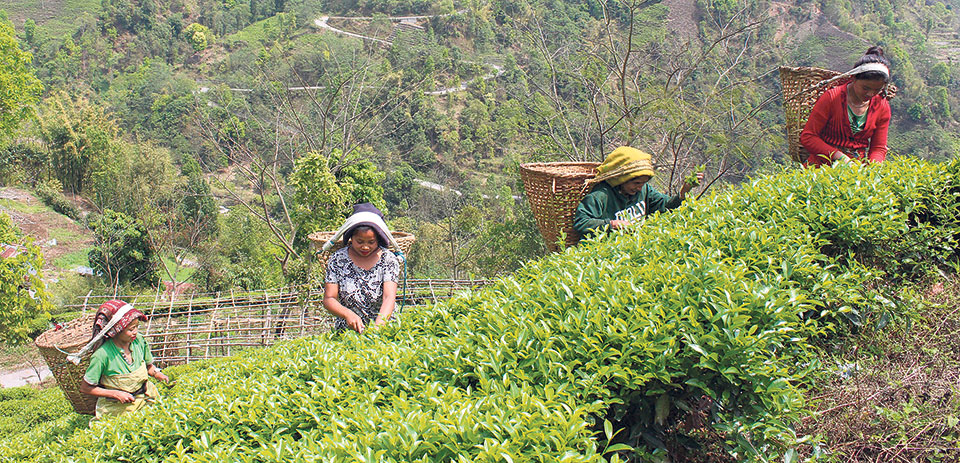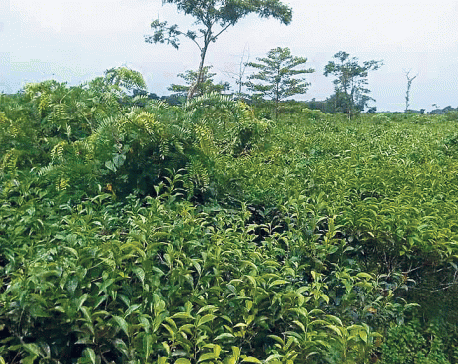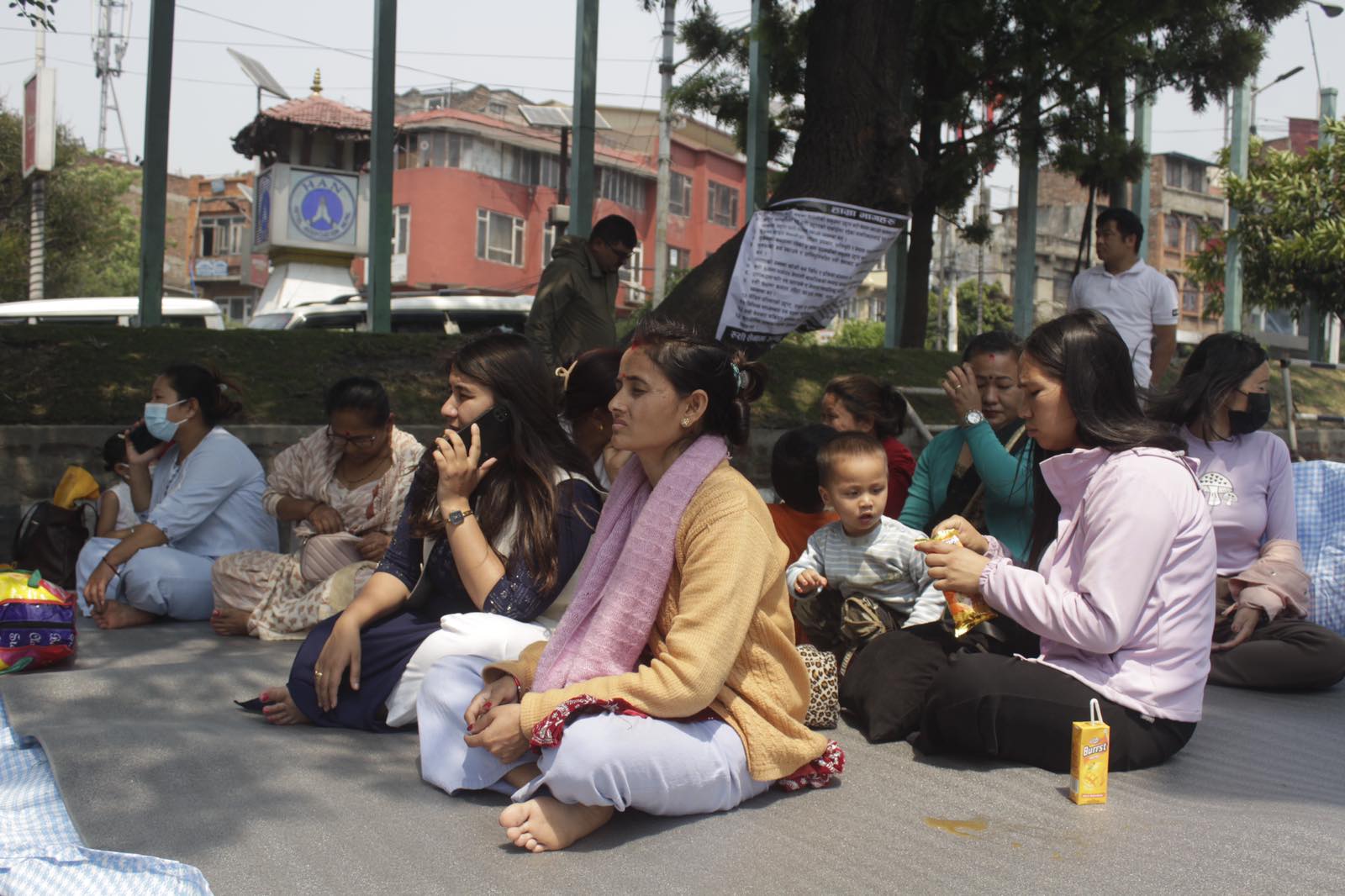
OR
Only five percent of tea farmers take loans to expand business: Report
Published On: July 14, 2018 09:21 AM NPT By: Republica | @RepublicaNepal

KATHMANDU, July 14: Although tea has been considered as a competitive product of the country, most of the tea farmers are apparently uninterested in expanding their business.
A survey conducted by Central Bureau of Statistics in association with Nepal Tea and Coffee Development Board has showed that only five percent of tea farmers were taking loans in order to expand their business. According to the survey, more than half of the tea farmers were satisfied with their income and business.
“Indeed, the data shows only few farmers are taking bank loans. Loan certainly plays a huge role in expanding business,” said Shashikanta Gautam, executive director of National Tea and Coffee Development Board. He was speaking on the occasion of the unveiling of the report on Friday. Former Prime Minister Baburam Bhattarai had waved off the farmers’ loan, Gautam added.
The survey has showed that even those farmers who have taken loans would prefer local cooperative organizations than the Agriculture Development Bank or other commercial banks. The cooperatives charge higher interest rates than the banks.
According to Gautam, villagers do not have access to the commercial banks so they prefer local cooperative organizations. The data shows that among the farmers who have taken loans, 48.3 percent have borrowed from cooperatives, 14.6 percent from Agriculture Development Bank, and 23.6 percent from banks and financial institutions.
Likewise, 3.9 percent have taken personal loans while 9.6 percent of tea farmers have taken loan from ‘other’ sources for their business.
“There are very few branch offices of commercial banks in villages while cooperative organizations are everywhere. This is the main reason behind the cooperatives being chosen by tea farmers instead of banks,” Gautam added.
He further said that the survey data does not include the Agricultural Development Bank loans as the government has been waving off these loans.
Approximately 95 percent of tea farmers have been cultivating tea on their own land, which reduces their expenses.
The report shows that 64.4 percent of tea farmers are not planning to expand their business immediately.
Tea farming has been the major source of income for around 53 percent of farmers growing tea. “This means a majority of them are fine with their investment and income, and they seem to be not interested in increasing their investment,” he added.
Farmers from 14 districts in the country are currently involved in cultivating tea, including Taplejung, Sankhuwasabha, Bhojpur, Dhankuta, Terhathum, Panchthar, Ilam, Jhapa, Morang, Dolkha, Sindhupalchowk, Nuwakot, Lalitpur, and Ramechhap. Of them, Ilam, Jhapa, Panchthar, Dhankuta, and Terhathum are the major tea producing districts.
Tea farming has covered around 12,066 hectares of land in the country, with total yield of 100 million tons of green leaves annually. Every year, the country exports tea to other countries worth around Rs 3 billion. Generally, Nepal produces three types of tea: CTC, orthodox, and green tea. According to Gautam, 55 percent of CTC tea produced in Nepal are being exported to India and to third countries. Similarly, 90 percent of green tea and orthodox tea produced here are exported to third countries.
A Total of 18,180 farmers are involved in tea farming directly or indirectly. Of which, 9,374 are male while 8,807 are female farmers. The farmers are collectively earning up to Rs 1.76 billion annually.
You May Like This

Flood, fire victims to get subsidized loans loans to rebuild house, run business
KATHMANDU, Jan 10: At a time when earthquake victims are struggling to get subsidized loans from bank and financial institutions... Read More...

Jhapa farmers quitting tea farming
DAMAK, July 25: With price of green tea declining rapidly, many farmers of the district have decided to get rid of... Read More...

Only 6 percent of capital budget spent
KATHMANDU, Nov 17: The government has managed to spend only 6.25 percent of the capital budget in the first quadrimester of... Read More...

Just In
- Govt padlocks Nepal Scouts’ property illegally occupied by NC lawmaker Deepak Khadka
- FWEAN meets with President Paudel to solicit support for women entrepreneurship
- Koshi provincial assembly passes resolution motion calling for special session by majority votes
- Court extends detention of Dipesh Pun after his failure to submit bail amount
- G Motors unveils Skywell Premium Luxury EV SUV with 620 km range
- Speaker Ghimire administers oath of office and Secrecy to JSP lawmaker Khan
- In Pictures: Families of Nepalis in Russian Army begin hunger strike
- New book by Ambassador K V Rajan and Atul K Thakur explores complexities of India-Nepal relations














_20240419161455.jpg)


Leave A Comment